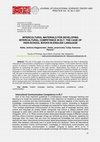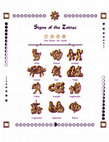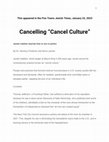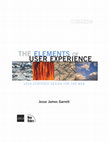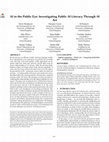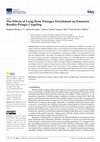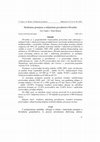Introduction The role of culture in foreign language teaching has long been discussed in the professional literature and views on what, how, and why language teachers should do in the classroom have changed significantly over the decades. What most scholars agree on is that language and culture cannot be separated from one another even if they disagree on how to determine what culture needs to be studied (e.g. high culture vs. low culture, subcultures of different kinds, national vs. ethnic cultures, etc.) or whether culture(s) can be monopolized or owned by any particular groups in a globalized world. Discussions on the subject often reveal that very often strong ideological perspectives - either in covert or overt ways - influence how language teaching is carried out and what language teaching materials contain. Although the professional literature dealing with teaching culture in the foreign language classroom displays “multiple theoretical and philosophical positions” (Risager, 2011, p. 485), three major periods can be identified in how perceptions about the role of culture have changed (Weninger & Kiss, 2013). The first period stretches from the 1950s till the first years of the 1990s and it is characterized by a view of culture as an object of study. Factual information of national cultures was thought to help learners assimilate into and become a member of the target language society. However, the strengthening globalization processes and changing learner needs in the 1990s brought about a new approach to culture teaching. In this second period authors (e.g. Kramsch, 1993, 1998) pointed out that cultural information needs to be more than facts about famous people, places and historical events in the language learning process. They argued that successful language acquisition entails cultural awareness, thus the cultural behavior, habits, the everyday practices of speakers of the target language - which some called culture with a small “c” (e.g. (Pulverness, 1995; Tomalin & Stempleski, 1993) – should be incorporated in the language curriculum. Others even questioned the validity of talking about a ‘target language culture’ when teaching a global language like English (Prodromou, 1992), and the movements which promoted an inter-, cross-, and trans-cultural approach as opposed to the single, national culture model gained prominence. Byram (1997), for example, argued that the goal of language teaching should be the development of intercultural competence that enables people to successfully communicate with others from different cultural and geographical contexts. Finally, the current trends treat culture as an increasingly complex and hybrid phenomenon. The role of language education is being reinterpreted requiring classroom teachers to move beyond the mere teaching of language structures and vocabulary. Now it is expected that learners are critically reflective (Kumaravadivelu, 2008) and they learn to become politically conscious and engaged citizens (Byram, 2011); a movement which is mirrored in general education by the promotion of 21st century skills (Trilling & Fadel, 2009). The fact that a rather rigid, factual view of culture based on simplified and stereotypical images has been replaced by dynamic and complex interpretations had an impact not only on teaching, but also on language teaching materials, especially on commercially produced language textbooks. Textbooks are often considered as one of the most accessible artifacts of language teaching which lend themselves easily for evaluation and analysis. They are static and observable; they provide an insight into language pedagogy at some point in time (through the activities they offer, the teaching guides they provide, etc.). They are time capsules in that they use texts as representational samples of the language and culture they focus on which, together with the use of visual materials, provide useful information on values, ideologies - the ‘hidden curriculum’ (McGrath, 2002; Snyder, 1970) that they are promoting. Whose values or ideologies these are is difficult to pinpoint given the multiple stakeholders in the publishing industry (textbook authors, publishers - including editors, visual designers, etc., educational authorities). Therefore, it is not surprising that there has been a continuous interest in the analysis of language textbooks to uncover how they promote cultural learning in the language classroom. Before we move on, however, we need to distinguish textbook evaluation from textbook analysis. In this chapter we prefer to use the term ‘textbook analysis’ which implies a more theoretical and principled approach to the examination of language teaching materials. Textbook analysis in our interpretation points further than judging the appropriateness of a particular book in a given educational context for use with specific students in mind. Analysis is concerned with identifying general trends using different theories as the framework of investigation, while evaluation is situated in the practice and context of the language teacher to offer practical and immediately applicable answers. Both analysis and evaluation are important but they are different in their purpose. It is possible to create four categories among the numerous studies that aimed to analyze foreign language teaching textbooks. Some analyses focus on identifying and describing pedagogical and methodological principles that form the underlying design of the materials. These aim to uncover how language teaching materials are aligned with current theories of language teaching, language testing, curriculum design, or language acquisition. Other studies focus on the linguistic approach of textbooks; they look at how and what vocabulary is presented in the materials; they investigate the phonetic and phonological content, looking at pronunciation activities or scrutinizing the accents and language varieties provided in the accompanying audio materials, or study the syntactical structures in the texts and activities the textbook provides. Some researchers investigate the ideological foundations of the teaching materials in order to understand the sociopolitical implications, the values, and beliefs the textbooks seem to promote. Finally, there are some studies which do not seem to provide a very clear aim or orientation in their approach of analysis. The authors of these studies fail to inform the readers why they want to carry out the analysis in the first place and how their work may contribute to the professional discussion on language pedagogy, linguistics, or materials design. They actually remind us of the famous words of George Mallory, a British mountaineer, who - when asked why he wanted to climb Mount Everest – said: “Because it’s there”. The aim of this chapter is not to pass judgments about the reasons why textbook analysis is conducted in the first place. Rather, we wish to offer a critical overview of methodological approaches and trends in the analysis of culture in foreign language teaching textbooks by looking at studies published in the past two decades. We investigate what theoretical frameworks researchers adopted in their work, what methodologies they used in order to explore whether the analysis of cultural content in foreign language materials shows a similar level of complexity and interdisciplinary nature as the teaching of culture, and how research findings and previous studies contribute to the development of the field. Byram, M. (1997). Teaching and assessing intercultural communicative competence. Clevedon: Multilingual Matters. Byram, M. (2011). Intercultural citizenship from an international perspective. Journal of the NUS Teaching Academy, 1(1), 10-20. Kramsch, C. (1993). Context and Culture n Language Teaching. Oxford: Oxford Univeristy Press. Kramsch, C. (1998). Language and Culture. Oxford: Oxford University Press. Kumaravadivelu, B. (2008). Cultural globalization and language education. New Haven: Yale University Press. McGrath, I. (2002). Materials evaluation and design for language teaching. Edinburgh: Edinburgh University Press. Prodromou, L. (1992). What culture? Whose culture? Cross-cultural factors in language learning. ELT Journal, 46(1), 39-50. Pulverness, A. (1995). Cultural Studies, British Studies and EFL. Modern English Teacher, 4(2), 7-11. Risager, K. (2011). The cultural dimensions of language teaching and learning. Language Teaching, 44(4), 485-499. Snyder, B. R. (1970). The Hidden Curriculum. New York: Alfred A. Knopf. Tomalin, B., & Stempleski, N. (1993). Cultural Awareness. Oxford: Oxford University Press. Trilling, B., & Fadel, C. (2009). 21st century skills: Learning for life in our times. San Francisco, CA: John Wiley & Sons.
English Language Teaching Materials and Cross-Cultural Understanding: Are There Bridges or Divides?
2015, TEFLIN Journal
Free related PDFsRelated papers
Advanced Linguistics, 2021
As an international language, English has gained more importance in international contexts to convey cultural messages. Hence, being proficient in the English language does not only require learners to be competent in the forms and functions of the language, but they also need to consider sociocultural values. In this regard, it is significant to be aware of the differences and similarities between the source culture and target cultures to build cultural awareness and have intercultural communicative competence. Being one of the most used teaching materials, coursebooks play a crucial role to develop intercultural communicative competence by introducing various cultures. Due to the importance of coursebooks in terms of representation of cultures, this study aims to examine the frequency of appearances of source culture, target culture, and international target cultures in reading texts of “English File Elementary” and “English File Pre-Intermediate” prepared by Latham-Koenig, Oxende...
Http Dx Doi Org 10 1080 07908318 2011 614694, 2011
Journal of Language and Cultural Education, 2020
The shift in the status of English as a lingua franca has challenged native-speaker culture in English language teaching and learning. That is why it is not enough to expose language learners through monoculture language teaching. Rather being communicatively competent, learners may require inter-cultural understanding. Therefore, the aim of this research is to investigate the representation of cultures through different senses in Oxford Progressive English (OPE), Level-10 (Rachel Redford, 2016). As OPE caters the needs of Pakistani language learners, it is hypothesized that learners’ source culture prevails more than other two cultures (i.e. international, and target). To confirm this hypothesis, a detailed content analysis of cultural senses (prevailed in OPE) is carried out through Adaskou, Britten and Fahsi (1990). The results show that the frequency of reading texts in OPE is highly imbued with learners’ target culture that is followed by the international culture, and least by...
2019
Language is considered as the carrier of cultural traditions and practices of the target language community. Thus, language and culture are intrinsically linked to each other. According to Hua (2014), while learning another language, the learners are exposed to facts, traditions and practices of the target language or second language culture. At the same time when teaching all the core language skills as Listening, Speaking, Reading and Writing, “culture is used as a pedagogic device to capture the learners’ interest or to contextualize language teaching” ( Hua, 2014, p.4). The place of culture in English as Lingua Franca is a conflicting issue because of the different contexts in which English is being used. More people use it as a Lingua France, for intercultural communication, which entails knowledge of not just the British or American culture but also a recognition and awareness of all the other cultures where English has been used and modified. Henceforth, there is a need to de...
Journal of Education and Practice, 2014
The global spread of English and the advent of a need for English as an International Language has become one of the hotly-debated issues in recent years. This owes much to the fact that English speakers today are more likely to be non-native speakers of English than native speakers, and most likely to use English in communication with other non-native speakers of English than native speakers. A significant number of scholars (e.g., Honna, 2003; Widdowson, 2003) even believe that English is no longer the sole property of its native speakers. Nevertheless, majority of English language teaching coursebooks are still being published by major Anglo-American publishers and are based on the linguistic norms and cultures of native English speaking countries, mainly the USA and the UK. Inevitably, criticism regarding an accurate presentation of cultural information and images about a variety of norms and cultures beyond the Anglo-Saxon and European world has risen. In fact, the English pres...
The aim of this paper is to show how intercultural materials can help in developing intercultural communication competence in English language lessons. It will confirm that the cultural content is present in students' books but what is needed is accurate guidance and paying more attention to conducting the lesson in the right manner. Observations are chosen as a research instrument in this study in order to explain the cultural component of teaching English as a foreign language in a more detailed way. Lesson observations based on action research is a systematic inquiry with the goal of informing practice in a particular situation. It is a tool for teachers to discover what works best in their own classroom situation, occupying a midpoint on a continuum from teacher reflection on one end to traditional appraisal lesson observation on the other. The conclusion tells us that there are many challenges that teachers are faced with when teaching students from different ethnic backgrounds and if the teacher is not familiar with the students' cultural backgrounds, they will be faced with difficulties in giving instructions or meeting their learning needs.
Free related PDFsRelated papers
Progress in Political Economy, 2024
Old Norse Law Books from a Material Perspective, 2024
American Scientific Research Journal for Engineering, Technology, and Sciences, 2016
Journal of Marine Science and Engineering, 2022
Frontiers in Immunology, 2013
Bulletin of Environmental Contamination and Toxicology, 1993
bioRxiv (Cold Spring Harbor Laboratory), 2021
Aaw Nurintiyara, 2024
- Find new research papers in:
- Physics
- Chemistry
- Biology
- Health Sciences
- Ecology
- Earth Sciences
- Cognitive Science
- Mathematics
- Computer Science
 Jayakaran Mukundan
Jayakaran Mukundan








